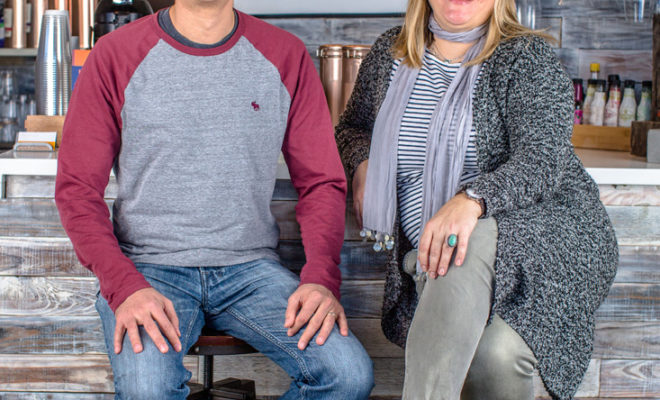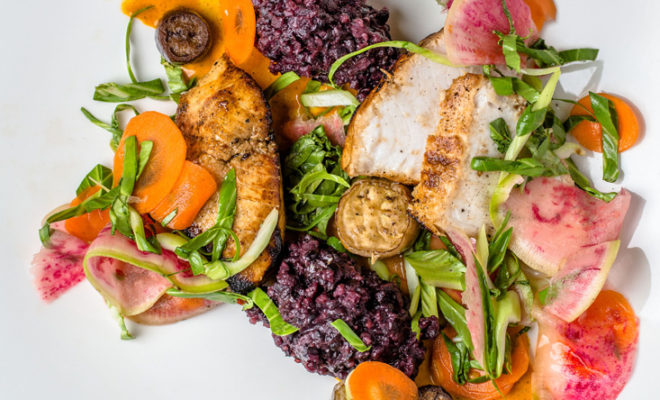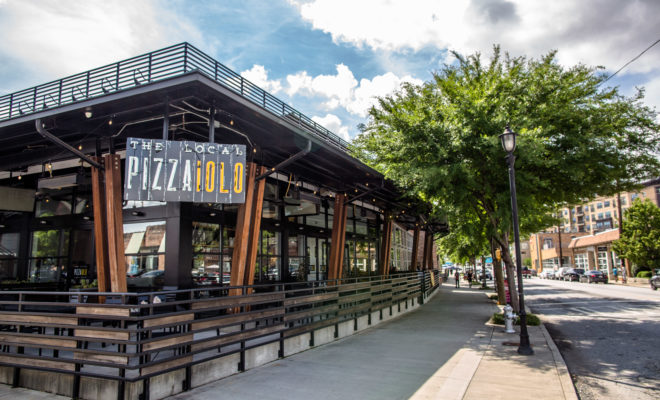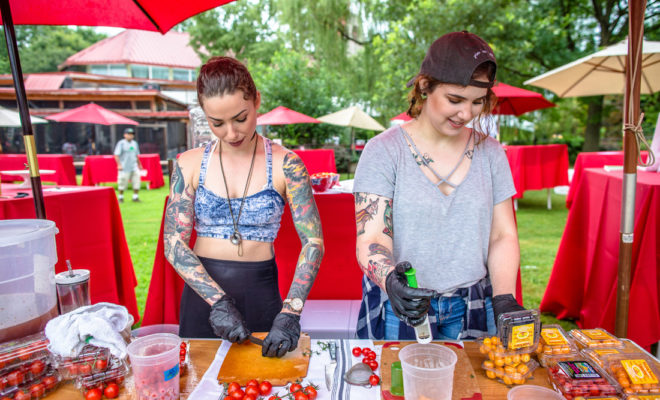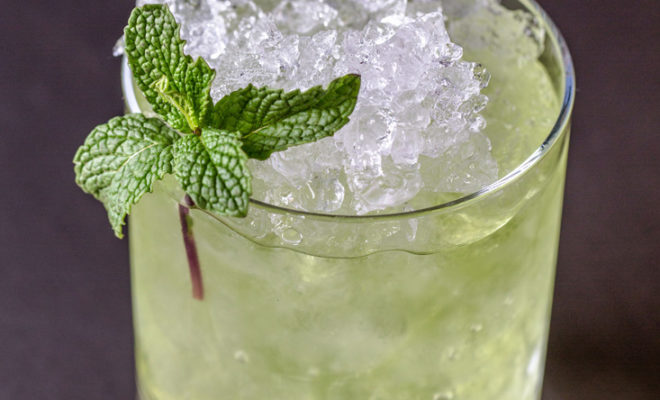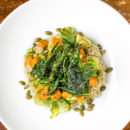Say ”Kanpai!” And Drink Sake
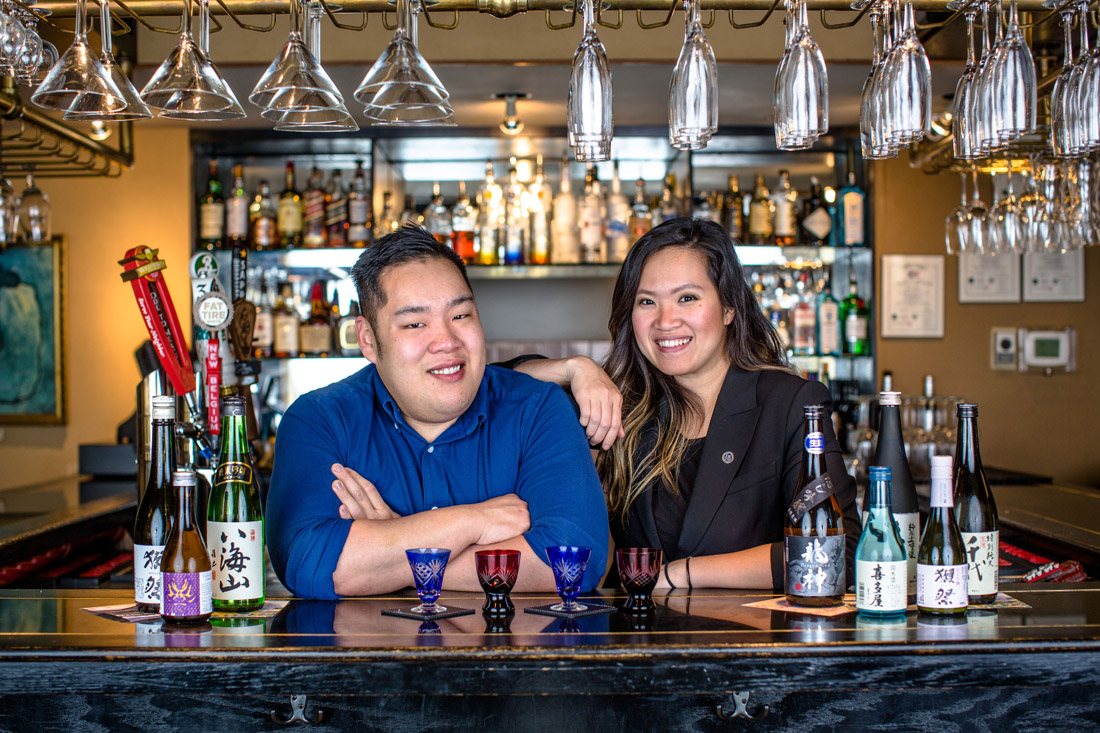
Nakato spreads its love for the Japanese rice wine
If you’ve been to a Japanese restaurant, odds are you’ve tried sake. The ancient, fermented drink is deeply rooted in Japanese history, but in the U.S., it’s underappreciated and often relegated to sake bombs or served hot to make it more palatable. Fatini Jiap and Billy Oei, sake advisers at Nakato on the edge of Morningside, are looking to change that. They worked at Nakato for seven years without giving sake much thought. But when the opportunity to get certified presented itself in 2015, they took it and became sake evangelists.
The class was offered through the Sake School of America, a Los Angeles-based organization centered on sake training and education with classes around the country, Atlanta included. It’s an intensive, one-day class, and for Oei and Jiap, it was enlightening. “We didn’t know that sake has so much depth, and it’s a drink full of culture,” says Jiap. It’s true: sake first appears in Japanese texts dating back to 712 A.D., is a staple of Japanese households and is a key component of major Japanese holidays. The two returned to Nakato armed with sake knowledge and began educating their customers.
“People try it once and think, ‘Oh my gosh, I don’t like this!’ But they don’t realize that there’s so much variety,” Jiap says. Now with a better understanding of sake’s nuances, Jiap and Oei (and the 11 other sake advisers at Nakato) help customers make informed choices.
If you’re uninitiated in the ways of sake, here’s a primer: Sake is referred to as a rice wine, although “wine” is a misnomer.
Sake is fermented with yeast and is more closely related to beer. The rice used to make sake is inedible and grown specifically for sake production. It’s “polished,” which means its outer layer has been removed, allowing easier access to its starchy center. Different sakes use varying degrees of polished rice, typically between 50% and 70%.
Sake has four main categories: junmai, honjozo, ginjo and daiginjo. Junmai is the purest form, made with rice, water, koji (mold) and yeast. Honjozo has the same attributes as junmai, but the addition of distilled alcohol brings out aromas and flavors while creating a longer shelf life. Ginjo uses rice that’s been 60% polished (as opposed to 70% in junmai). This makes for a sake that’s more floral with a smoother finish. Daiginjo means “big ginjo” and uses rice that’s been 50% polished. It’s a super-premium sake and the sake brewery’s most prized bottle. Usually the best rice is used, and extra precautions are taken during production, such as using smaller tanks and a specialized koji. “Each ingredient affects the taste of the sake, especially what type of water is used,” says Oei.
Cloudy sake is usually referred to as “unfiltered,” but this is another misnomer, Jiap explains. “All sake is filtered. If not, everyone is going to get a tummy ache. People just assume it’s not filtered because it’s cloudy, but what’s different is that cloudy sake still has rice solids that weren’t fermented all the way.” This type of sake is called nigori, which means “cloudy,” and it’s usually sweet with a creamy mouthfeel— a perfect match for spicy food.
Ready to give sake another try? Start with Kitaya, a junmai daiginjo. It’s balanced, crisp and dry, complementing foods that aren’t too bold in flavor. Jiap especially likes it with sashimi. For something more fruit-forward that packs a punch, try Dragon God. Unlike most sakes that have been pasteurized twice, it’s only been pasteurized once, which gives it a bit of a creamier texture and fuller body.
If you want to learn more about sake without committing to a costly certification class, Nakato offers a tasting class this month in its traditional tatami room that seats 16 people.
Nakato Japanese Restaurant
1776 Cheshire Bridge Road, 30324
404.873.6582
nakatorestaurant.com
STORY: Lia Picard P
HOTOS: Erik Meadows

